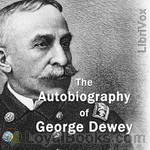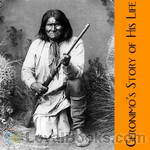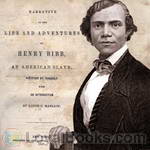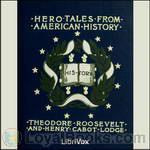|
Books Should Be Free Loyal Books Free Public Domain Audiobooks & eBook Downloads |
|
|
Books Should Be Free Loyal Books Free Public Domain Audiobooks & eBook Downloads |
|
Biographies |
|---|
|
Book type:
Sort by:
View by:
|
By: George Dewey (1837-1917) | |
|---|---|
 The Autobiography of George Dewey
The Autobiography of George Dewey
Admiral George Dewey, United States Navy, is best remembered for his victory over the Spanish fleet at the Battle of Manila Bay during the Spanish-American War (1898). Written when Dewey was seventy-five years old and had served fifty-nine years in the navy, this book offers not only an excellent account of the famous naval battle in the Philippines, but also stories of the author’s many adventures during his long sea-going career, including some hair-raising experiences during the Civil War. | |
By: George Iles (1852-1942) | |
|---|---|
 Little Masterpieces of Autobiography: Actors
Little Masterpieces of Autobiography: Actors
The playwright gives a play its plot, characters, dialog and form, but its sense of living reality is conveyed by the art of the actor. This fascinating collection of perspectives on acting is taken from biographies and autobiographies of American, British and Italian actors of the late 19th and early 20th centuries. John Wilkes Booth, an actor and the assassin of President Abraham Lincoln, is recalled by his brother, the great actor Edwin Booth, and by acclaimed actress Clara Morris. -- Lee Smalley | |
 Little Masterpieces of Autobiography - Writers
Little Masterpieces of Autobiography - Writers
Writers is Volume 4 of Library of Little Masterpieces of Autobiography in Six Volumes as published in 1913, and includes writings of Henry Wadsworth Longfellow, Edgar Allan Poe, Alfred Tennyson, Robert Burns, Walter Scott, Nathaniel Hawthorne, Charles Dickens, Charlotte Brontë, George Eliot, Robert Louis Stevenson and Henry George. The series includes letters, passages from autobiographies, and pages from diaries written by each of these. - Summary by J. M. Smallheer | |
By: George Macaulay Trevelyan (1876-1962) | |
|---|---|
 Garibaldi and the Making of Italy
Garibaldi and the Making of Italy
Giuseppe Garibaldi (1807-1882) was an Italian general and politician who played a large role in making of what Italy is today. He is known as one of Italy's "fathers of the fatherland". Garibaldi was a central figure in the Italian Risorgimento (Resurrection), and led the famous Expedition of the Thousand on behalf and with the consent of Victor Emmanuel II. The volunteers under his command wore red shirts as their uniform and became known in the popular stories as, "The Red Shirts."He gained his military expertise from his experiences in Brazil, Uruguay as well as Europe... | |
By: George Pearson | |
|---|---|
 The Escape of a Princess Pat
The Escape of a Princess Pat
Being the full account of the capture and fifteen months’ imprisonment of Corporal Edwards, of the Princess Patricia’s Canadian Light Infantry, and his final escape from Germany into Holland. | |
By: Georges Lacour-Gayet (1856-1935) | |
|---|---|
 Bismarck
Bismarck
Otto von Bismarck famously said, "The great questions of the day will not be settled by speeches or the decisions of the majority...but by iron and blood." Prince Bismarck unified the German states under Prussian hegemony through a series of carefully orchestrated wars, which excluded Austria from the new Confederation and added Schleswig-Holstein, and Alsace-Lorraine to Germany. But Bismarck avoided useless confrontations and was, above all, a master of balance of power diplomacy. His skills, both at home and abroad, won him the loyal support of Kaiser Wilhelm I... | |
By: Geraldine Edith Mitton (1868-1955) | |
|---|---|
 Jane Austen and Her Times
Jane Austen and Her Times
This is a lively and highly accessible overview of the life and times of one of England's most beloved authors. Using excerpts from a wide variety of sources, such as Austen's own personal correspondence and the works of her contemporaries, Mitton chronicles her literary career and family life amidst the changing climate of the Georgian and Regency eras, giving the reader a sense of what it was like to live in her world. A must-read for the dedicated Austen aficionado! - Summary by Tomas Peter | |
By: Geronimo (1829-1909) | |
|---|---|
 Geronimo’s Story of His Life
Geronimo’s Story of His Life
Geronimo’s Story of His Life is the oral life history of a legendary Apache warrior. Composed in 1905, while Geronimo was being held as a U.S. prisoner of war at Fort Sill, Oklahoma, Geronimo’s story found audience and publication through the efforts of S. M. Barrett--Lawton, Oklahoma, Superintendent of Education, who wrote in his preface that “the initial idea of the compilation of this work was . . . to extend to Geronimo as a prisoner of war the courtesy due any captive, i.e. the right to state the causes which impelled him in his opposition to our civilization and laws... | |
By: Giacomo Casanova (1725-1798) | |
|---|---|
 The Memoirs of Jacques Casanova
The Memoirs of Jacques Casanova
This is the first of five volumes. – Giacomo Casanova (1725 in Venice – 1798 in Dux, Bohemia, now Duchcov, Czech Republic) was a famous Venetian adventurer, writer, and womanizer. He used charm, guile, threats, intimidation, and aggression, when necessary, to conquer women, sometimes leaving behind children or debt. In his autobiography Histoire de ma vie (Story of My Life), regarded as one of the most authentic sources of the customs and norms of European social life during the 18th century, he mentions 122 women with whom he had sex... | |
By: Gilbert Burnet (1643-1715) | |
|---|---|
 Some Passages of the Life and Death of the Right Honourable John, Earl of Rochester
Some Passages of the Life and Death of the Right Honourable John, Earl of Rochester
I believe that the good Bishop of Salisbury's account of the last days of poor young Rochester would, if carefully read, make more impression on the mind of a fast young man than a hundred sermons from the pulpit would effect. Can anything, indeed, be sadder than that one so highly gifted with intellect, courage, and good looks as Wilmot Lord Rochester, should have left a name almost proverbial for all that is most dissipated and abandoned; and that a career which might have rivalled in the reign of Charles II... | |
By: Giles Lytton Strachey (1880-1932) | |
|---|---|
 Eminent Victorians
Eminent Victorians
On Modern Library's list of 100 Best Non-Fiction books, "Eminent Victorians" marked an epoch in the art of biography; it also helped to crack the old myths of high Victorianism and to usher in a new spirit by which chauvinism, hypocrisy and the stiff upper lip were debunked. In it, Strachey cleverly exposes the self-seeking ambitions of Cardinal Manning and the manipulative, neurotic Florence Nightingale; and in his essays on Dr Arnold and General Gordon, his quarries are not only his subjects but also the public-school system and the whole structure of nineteenth-century liberal values. | |
By: Giorgio Vasari (1511-1574) | |
|---|---|
 Lives of the Most Eminent Painters, Sculptors and Architects
Lives of the Most Eminent Painters, Sculptors and Architects
The Lives of the Most Excellent Italian Painters, Sculptors, and Architects, from Cimabue to Our Times, or Le Vite delle più eccellenti pittori, scultori, ed architettori, as it was originally known in Italian, is a series of artist biographies written by 16th century Italian painter and architect Giorgio Vasari, which is considered "perhaps the most famous, and even today the most- read work of the older literature of art", "some of the Italian Renaissance's most influential writing on art", and "one of the founding texts in art history"... | |
By: Giovanni Boccaccio (1313-1375) | |
|---|---|
 Early Lives of Dante
Early Lives of Dante
This recording contains two early biographies of Dante, both written by notable Florentine literati. Giovanni Boccaccio was an Italian poet, most famous for his monumental collection of tales, The Decameron. Like Dante, Boccacio was one of the first writers to use the Italian vernacular. Lionardo Bruni was an accredited historian and man of letters. His short biography was inspired by reading the version of Dante's life by Boccaccio, who he considered had mispresented Dante by over-emphasizing the influence of his association with Beatrice... | |
By: Grant Allen (1848-1899) | |
|---|---|
 Biographies of Working Men
Biographies of Working Men
Grant Allen was an anthropologist, scientific writer, novelist and poet, though the biographer and writer Frank Harris has said of him that "He could be described with more 'ists' than anyone else I ever saw. He was an atheist and pacifist and socialist, a botanist and zoologist and optimist, a chemist and physicist, a scientist of scientists, a monist, meliorist and hedonist…". As a novelist, he is noted as a pioneer in both the detective and science fiction genres. He was born in Canada but spent the latter part of his life in England... | |
By: Gustav A. Just (1847-1924) | |
|---|---|
 Life of Luther
Life of Luther
This short biography of Martin Luther, by Gustav Just, who taught at Bethlehem Evangelical Lutheran School, St. Louis, is a standard resource for students, young and old. The first five chapters give a swift moving, succinct overview of church history up to Luther’s time, and the final two chapters deal with the church after Luther’s death. Martin Luther is presented in a favorable, but objective light and his influence appreciated as the primary leader of the Reformation. - Summary by Larry Wilson | |
By: Gustav Kobbé (1857-1918) | |
|---|---|
 Loves of Great Composers
Loves of Great Composers
Gustav Kobbe was a German/US music critic who worked at the time of Liszt and Wagner in particular, and was clearly in the Wagnerian rather than the Brahms camp. His unusual style of writing and his strongly romantic take on the loves of these seven composers makes for entertaining listening, even though his facts and opinions may differ from more academic writers and biographers of these composers. Each composer occupies a section or chapter, with Wagner getting the fuller account in terms of length... | |
By: Hamilton Fyfe (1869-1951) | |
|---|---|
 Arthur Wing Pinero, Playwright - A Study
Arthur Wing Pinero, Playwright - A Study
A discussion about the life and works of the playwright Arthur Wing Pinero. The perfect accompaniment to the plays by Pinero available here at. - Summary by ToddHW | |
By: Hamilton Wright Mabie (1846-1916) | |
|---|---|
 The Mentor: Famous English Poets
The Mentor: Famous English Poets
This is Vol. 1, No. 44, Serial No. 44 of The Mentor, published in 1913. This edition of the Mentor Magazine focuses on six of England's most well-known poets - Lord Byron, John Keats, Percy Shelley, William Wordsworth, Alfred Tennyson and Robert Browning. | |
By: Hamlin Garland (1860-1940) | |
|---|---|
 Son of the Middle Border
Son of the Middle Border
In all the region of autobiography, so far as I know it, I do not know quite the like of Mr. Garland's story of his life, and I should rank it with the very greatest of that kind in literature. . . . It is the poet who sees the vast scale of human struggle with nature or the things she will withhold unless they are forced from her by man's tireless toil and mighty mechanism, and in the vision he knows a battle-joy as distinctive of this Son of the Middle Border as his fidelity to the sordid and squalid details of the campaign, or his exultation of the beauty of the West which he has so passionately hated and finally so passionately loves... | |
By: Handley Carr Glyn Moule (1841-1920) | |
|---|---|
 Charles Simeon
Charles Simeon
Charles Simeon had come up to King’s college from Eton, a wild undergraduate, famous for his love of horses and extravagance in dress; but one day he discovered that the rules of the college compelled him to receive the Communion on the following Sunday. He had lived in an utterly careless home, but he knew enough of religion to realise that attendance at the Lord’s Table was a serious thing, which should not be undertaken without some preparation. Not quite knowing what to do, he went to a bookseller’s shop, and bought a copy of Bishop Wilson on the Lord’s Supper, and learned from it for the first time the meaning of the Atonement... | |
By: Harold J. Laski (1893-1950) | |
|---|---|
 Karl Marx: An Essay
Karl Marx: An Essay
Born in Manchester in 1893, Harold Laski was a leading figure in the left-wing of British socialism in the first half of the 20th century. An executive member of the Fabian Society and member of the Socialist League faction of the Labour Party, he was party chairman in 1945-6. As a professor at the London School of Economics he influenced a number of prominent politicians of the post-war years, including leaders of the independence movements of Asia and Africa, and Ralph Milliband, father of the current Labour Party leader, Ed Milliband... | |
By: Harriet Beecher Stowe (1811-1896) | |
|---|---|
 Palmetto Leaves
Palmetto Leaves
After the Civil War, Harriet and her husband Charles bought an Orange Plantation in Mandarin, on the upper east coast of Florida, where they lived during the winter months. Over the years they expanded their cottage to accommodate many guests . They opened schools to educate and churches to care for the recently freed negros pouring into Florida seeking refuge and opportunity. These charming essays, each describing a largely undeveloped rural land, became one of the first travel guides written about Florida and stimulated the first boom of tourism and residential development to that area... | |
 Lady Byron Vindicated
Lady Byron Vindicated
In 1869, the Atlantic published Stowe's article, The True Story Of Lady Byron's Life, a brief exposé of the famous poet Lord Byron's sordid private life which had led to a separation from his wife and drove him out of England, as told to her by Lady Byron herself before her death. Stowe wrote this article long after Lady Byron's death, when Lady Byron‘s impeccable reputation was being smeared across Europe by Byron's influential literary friends, and her trustees were doing nothing to defend her... | |
By: Helen Keller (1888-1968) | |
|---|---|
 The Story of My Life
The Story of My Life
An autobiography of Helen Keller published when the author was still in her early 20's. The narrative reveals how her mind developed and matured until she began her studies at Radcliffe College | |
 The World I Live In
The World I Live In
The World I Live In by Helen Keller is a collection of essays that poignantly tells of her impressions of the world, through her sense of touch, smell, her imagination and dreams. My hand is to me what your hearing and sight together are to you. In large measure we travel the same highways, read the same books, speak the same language, yet our experiences are different. All my comings and goings turn on the hand as on a pivot. It is the hand that binds me to the world of men and women. The hand is my feeler with which I reach through isolation and darkness and seize every pleasure, every activity that my fingers encounter... | |
By: Helen Nicolay (1866-1954) | |
|---|---|
 Boys' Life of Abraham Lincoln
Boys' Life of Abraham Lincoln
The Boys’ Life of Abraham Lincoln is a biography with many anecdotes that takes one deeper into the thoughts, personality, and beliefs of the man that was Lincoln. While the title indicates the book is about Lincoln’s life as a boy, the book is a full, if somewhat shortened biography. It is very well written and was a joy to record. One might ask, "Who was Helen Nicolay?" Her father, John George Nicolay, was Abraham Lincoln's private secretary and doubtless much of the material comes from his complete biography of Abraham Lincoln. ( | |
By: Henrietta Elizabeth Marshall (1867-1941) | |
|---|---|
 Story of Napoleon
Story of Napoleon
This book gives an exciting account of Napoleon's rise to power. It opens with his humble beginning on the island of Corsica and ultimately emperor of over half of Europe. This book focuses on his victorious military campaigns, his disastrous Russian campaign, his exile to the island of Elba, his final loss at Waterloo, and his last days on the lonely island of St. Helena. Summary by pjcsaville. | |
By: Henry Bibb (1815-1854) | |
|---|---|
 Narrative of the Life and Adventures of Henry Bibb, an American Slave
Narrative of the Life and Adventures of Henry Bibb, an American Slave
Henry Walton Bibb was born a slave. His father was white although his identity was not positively known. Bibb was separated from his mother at a very young age and hired out to other slave owners for most of his childhood. Always yearning for his freedom, he made his first escape from slavery in 1842. He was recaptured and escaped, recaptured and escaped over and over; but he never gave up on his desire to be a man in control of his own destiny. | |
By: Henry Brooks Adams (1838-1918) | |
|---|---|
 Education of Henry Adams
Education of Henry Adams
The Education of Henry Adams records the struggle of Bostonian Henry Adams (1838-1918), in early old age, to come to terms with the dawning 20th century, so different from the world of his youth. It is also a sharp critique of 19th century educational theory and practice. In 1907, Adams began privately circulating copies of a limited edition printed at his own expense. Commercial publication had to await its author's 1918 death, whereupon it won the 1919 Pulitzer Prize. (Introduction by Wikipedia) | |
By: Henry Cabot Lodge (1850-1924) | |
|---|---|
 Hero Tales from American History
Hero Tales from American History
Its purpose … is to tell in simple fashion the story of some Americans who showed that they knew how to live and how to die; who proved their truth by their endeavor; and who joined to the stern and manly qualities which are essential to the well-being of a masterful race the virtues of gentleness, of patriotism, and of lofty adherence to an ideal. It is a good thing for all Americans … to remember the men who have given their lives in war and peace to the service of their fellow-countrymen, and to keep in mind the feats of daring and personal prowess done in time past by some of the many champions of the nation in the various crises of her history. | |
By: Henry David Thoreau (1817-1862) | |
|---|---|
 Walden
Walden
Two years, two months and two days! This is what forms the time line of one man's quest for the simple life and a unique social experiment in complete self reliance and independence. Henry David Thoreau published Walden in 1884. Originally drafted as a series of essays describing a most significant episode in his life, it was finally released in book form with each essay taking on the form of a separate chapter. Thoreau's parents were in financial straights, but rich intellectually and culturally... | |
By: Henry Duff Traill (1842-1900) | |
|---|---|
 William the Third
William the Third
William Henry, Prince of Orange and Nassau, Dutch William to the English, was born in a state threatened by the military ambitions of Louis XIV. “Reared from his very cradle amid the animosities of contending factions,” Traill writes, “the young Prince learned early those four lessons of statecraft,—to conceal his designs, to watch his opportunities, to choose his instruments, and to bide his time.” The Dutch Republic, distrustful of monarchs, reluctantly chose him as stadtholder to lead their armies, and then, after the overthrow of James II in 1688, he became with his consort, Mary, England’s king. | |